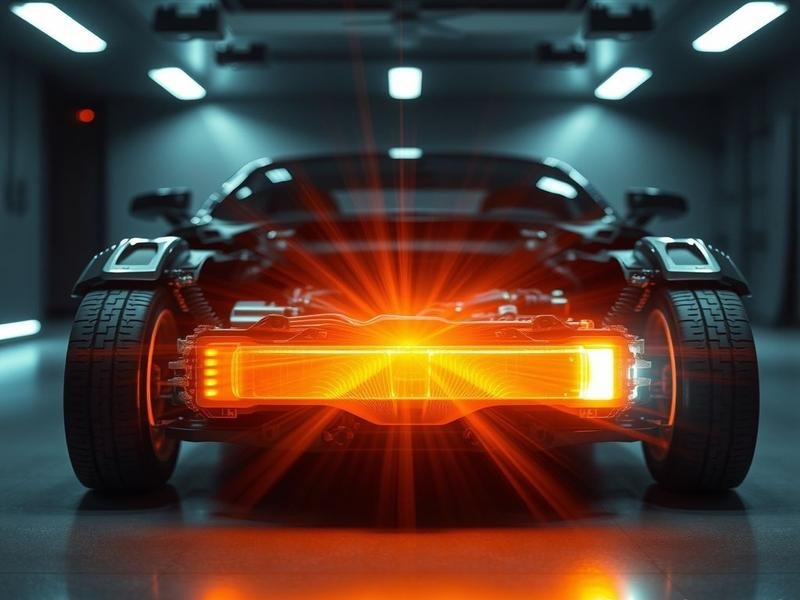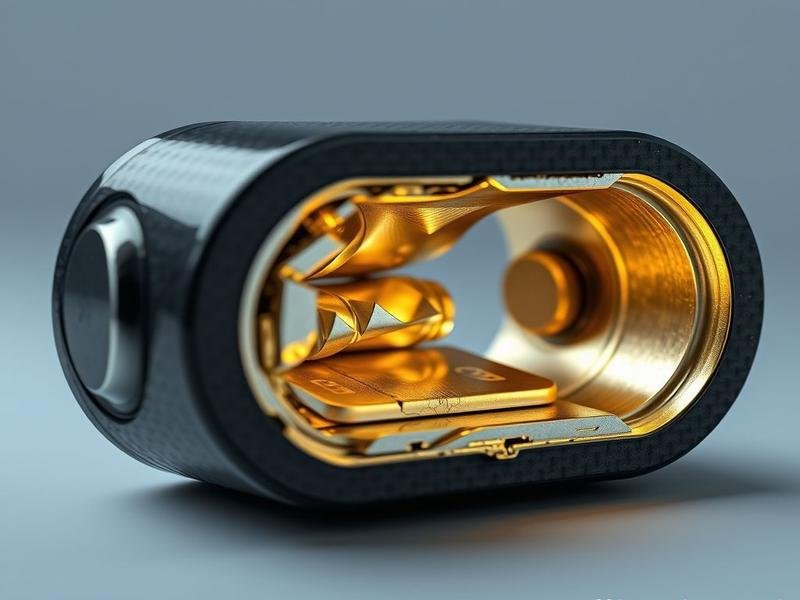BYD’s new battery achieves 80% charge in minutes 🤯 Is this the future of automotive technology?

BYD’s New Battery: 80% Charge in Minutes!
In a landscape defined by rapid technological advancement and intense competition for sustainable solutions, a new energy revolution is emerging. Lithium-ion batteries, the cornerstone of electric vehicles (EVs), are poised to enter a new era characterized by unprecedented efficiency and ultra-fast charging capabilities. This raises the question: are we on the verge of a transformative shift in electric mobility, one where range anxiety is alleviated and charging times are significantly reduced?
At the forefront of this revolution is BYD, a prominent Chinese automotive manufacturer, which recently unveiled the next generation of its Blade battery, a highly anticipated technology expected to redefine performance benchmarks in the EV sector. This begs the questions: What exactly is the Blade battery? What are the underlying principles enabling its superior charging performance? And what are the broader implications of this technological advancement for the future of electric mobility?
Understanding Lithium-Ion Battery Technology
Let us delve into the intricacies of battery technology, where the principles of chemistry and physics converge to generate the energy that powers our modern world. Lithium-ion batteries, as the name suggests, function based on the movement of lithium ions between two electrodes: the anode (negative electrode) and the cathode (positive electrode). During charging, lithium ions migrate from the cathode to the anode, storing energy. Conversely, during discharge, the ions return to the cathode, releasing the energy required to power the vehicle. Battery efficiency and energy storage capacity are critical determinants of EV performance, and these factors are heavily influenced by the materials used in the anode and cathode.
Traditionally, lithium-ion batteries have utilized materials such as lithium oxide, cobalt, nickel, and manganese in the cathode, and graphite in the anode. However, these materials present certain limitations, including the high cost and limited availability of cobalt, as well as safety concerns related to thermal runaway in specific scenarios.
The BYD Blade Battery: A Revolutionary Design
The Blade battery represents a significant departure from conventional battery design. Instead of a standard configuration involving multiple cells assembled into a single module, the Blade battery employs a more streamlined and efficient architecture. Long, thin cells are directly integrated into the battery pack in a blade-like arrangement – hence the name – resulting in increased energy density and improved space utilization.
The key to the Blade battery’s ultra-fast charging capability lies in its unique chemical composition and innovative design. The Blade battery incorporates a lithium iron phosphate (LFP) cathode, a material recognized for its high thermal stability and lower cost compared to alternative materials. Furthermore, the Blade’s distinctive design facilitates enhanced heat dissipation, mitigating the risk of battery overheating during rapid charging.
80% Charge in Minutes: A Game Changer
The recent announcement from BYD’s CEO regarding the next generation of the Blade battery and its ability to achieve an 80% charge in record time signifies a substantial advancement in battery technology. This development translates to a significant reduction in charging times for EV drivers. While the precise timeframe depends on factors such as battery capacity and charger power, initial estimates suggest that the next generation of the Blade battery may be capable of reaching an 80% charge in approximately 10-15 minutes using an ultra-fast charger. This charging duration is comparable to the time required to refuel a conventional vehicle, thereby enhancing the appeal of EVs to a broader consumer base.
Addressing the Challenges of EV Adoption
To fully appreciate the significance of this achievement, it is important to consider the current state of the EV market. Despite the rapid growth in EV sales in recent years, certain challenges continue to impede their widespread adoption. These challenges include range anxiety, the high cost of batteries, and lengthy charging times. The next generation of the Blade battery directly addresses these concerns. By increasing energy density and improving charging efficiency, the battery contributes to extended driving range and reduced charging times. Moreover, the use of LFP in the cathode lowers battery cost, making EVs more accessible to consumers.
BYD: A Force in the EV Revolution
BYD is not simply another participant in the EV market; it is an emerging force poised to reshape the global transportation landscape. Established in 1995 as a battery manufacturer, the company rapidly expanded into the automotive industry. Today, BYD is one of the world’s leading EV manufacturers, with a strong presence in the Chinese, European, and Latin American markets. The Blade battery is a central element of BYD’s growth and expansion strategy. The company believes that advanced battery technology is essential for achieving a sustainable future for transportation. Through investments in battery research and development, BYD aims to create batteries that are more efficient, safer, and more affordable.
Implications for the Future of Electric Mobility
The implications of this technological advancement for the future of electric mobility are clear: a more promising and sustainable future. By mitigating range anxiety and shortening charging times, the Blade battery will enhance the attractiveness of EVs to consumers. This, in turn, will drive increased demand for EVs, contributing to a reduction in harmful emissions and improved air quality. Furthermore, the use of LFP in the cathode reduces reliance on cobalt, a scarce and expensive metal that is sometimes extracted under unsustainable conditions, thereby promoting a more sustainable and ethical battery industry.
However, certain challenges must still be addressed before EVs become the norm rather than the exception. One such challenge is the development of charging infrastructure. To support the anticipated growth in EV sales, a greater number of charging stations must be established in public areas and residential settings. Another challenge is the development of renewable energy storage technologies. The environmental benefits of EVs are maximized when they are powered by renewable energy sources. Therefore, investments in renewable energy storage technologies, such as large-scale batteries, are crucial to ensuring that EVs are integrated into a truly sustainable energy system.
Technical Specifications and Safety Features
Let us now examine the technical specifications of the Blade battery in greater detail. As previously mentioned, the battery utilizes an LFP cathode, with the chemical formula LiFePO4. This material exhibits a stable crystal structure that provides resistance to overheating and combustion. In addition, the Blade’s unique design facilitates improved heat dissipation. The long, thin cells are directly integrated into the battery pack, increasing the surface area available for heat transfer. This reduces the risk of battery overheating during rapid charging or extreme discharge.
Safety is a paramount consideration in battery design. Recent incidents involving lithium-ion battery fires in EVs have raised concerns regarding the safety of EVs. The Blade battery offers enhanced safety compared to traditional lithium-ion batteries. By utilizing LFP in the cathode and incorporating the Blade’s unique design, the battery reduces the risk of overheating and combustion. The Blade battery has undergone rigorous testing, including the nail penetration test, and has demonstrated exceptional performance. The nail penetration test involves puncturing the battery with a sharp object, such as a nail, to simulate damage resulting from an accident. The Blade battery has exhibited high resistance to combustion or explosion during this test.
In addition to safety, durability is a key consideration in battery design. The battery must be capable of withstanding repeated charge and discharge cycles without significant performance degradation. The Blade battery has demonstrated excellent durability in testing. A charge and discharge cycle is defined as fully charging the battery and then fully discharging it. The Blade battery has demonstrated its ability to withstand thousands of charge and discharge cycles without substantial capacity loss.
Specific data pertaining to the Blade battery includes an energy density of approximately 150 Wh/kg, indicating that the battery can store 150 watt-hours of energy per kilogram of its weight. The nominal voltage of the Blade battery is approximately 3.2 volts per cell, meaning that each cell in the battery produces 3.2 volts of electricity. The expected lifespan of the Blade battery is approximately 8 years or 1.2 million kilometers, whichever comes first, indicating the expected duration of reliable performance. These data points underscore the fact that the Blade battery represents a significant advancement in battery technology.
Future Developments in Battery Technology
Looking ahead, what future developments can we anticipate in the field of battery technology? Research and development efforts are underway in numerous areas, including the development of solid-state batteries. Solid-state batteries utilize a solid electrolyte instead of a liquid electrolyte, offering advantages such as increased energy density and improved safety. Another area of focus is the development of lithium-sulfur batteries, which utilize sulfur as the cathode and offer the potential for very high energy density, making them promising for use in EVs and drones. A third area of research and development is the development of battery recycling technologies. With the increasing number of EVs on the road, it is essential to develop effective technologies for recycling end-of-life batteries. Recycling batteries can help reduce the need to mine new metals and minimize the environmental impact of battery production. The future of battery technology is promising. Continued research and development efforts are expected to yield batteries that are more efficient, safer, and more affordable, playing a crucial role in achieving a sustainable future for transportation.
Conclusion
In conclusion, BYD’s CEO’s announcement of the next generation of the Blade battery with 80% charging capability represents a significant step forward in the evolution of electric mobility. This battery is not merely an incremental technological improvement but a transformative innovation in the field of energy, paving the way for a future that is more sustainable, more efficient, and more accessible to all. Therefore, let us consider a world that demands innovative solutions. Join us on this journey and contribute to shaping a more sustainable future by supporting scientific innovations.










